When I began to knit patterns written in English, I was surprised that M1L and M1R increases were used very frequently, because the increases generally used in Japan are KRL and KLL. They are very easy to do, neat, and useful!
There are also their purled versions, PRL and PLL that I’d like to present you, because there is no tutorial on them on the internet, and they’re I think much easier than M1Lp and M1Rp! But I’m going to show you KRL and KLL first to show you the principle.
KRL and KLL are short for Knit Right Loop and Knit Left Loop, and you “knit right or left loop of the stitches just below the stitches next to which you want to increase”. I’m sorry for this tortuous sentence, and it’s said a picture is worth thousand words, so here’s a photo tutorial!
Knit Right Loop = right-leaning increase
1. In this example, I’m going to make one stitch next to the third stitch (between the 2nd and the 3rd), so I knit 2 sts.
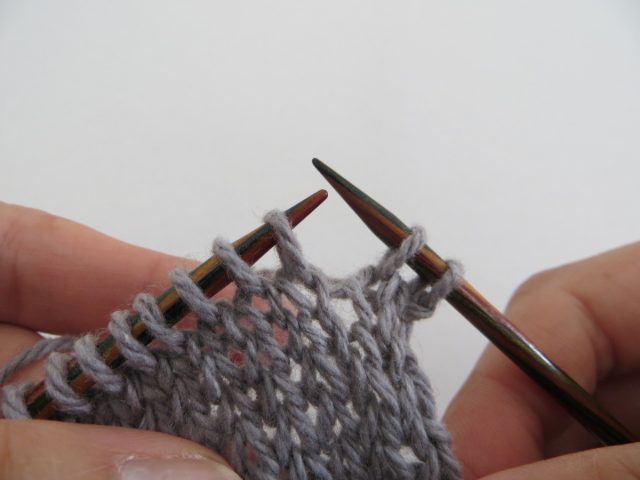
2. Insert your right hand needle into the stitch below the next (=third) stitch.
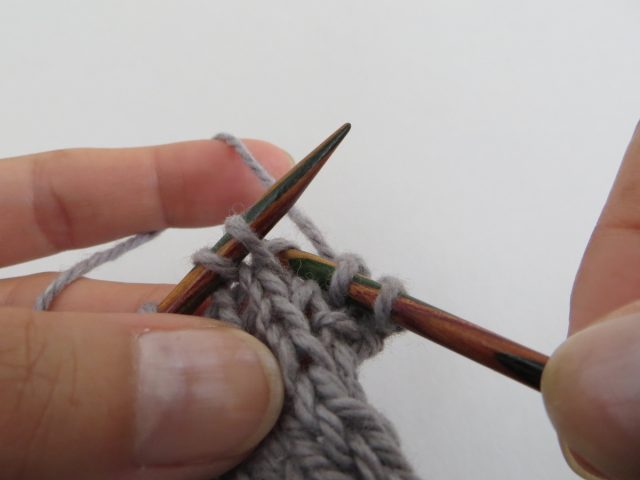
3. Catch the working yarn and pull through the stitch.
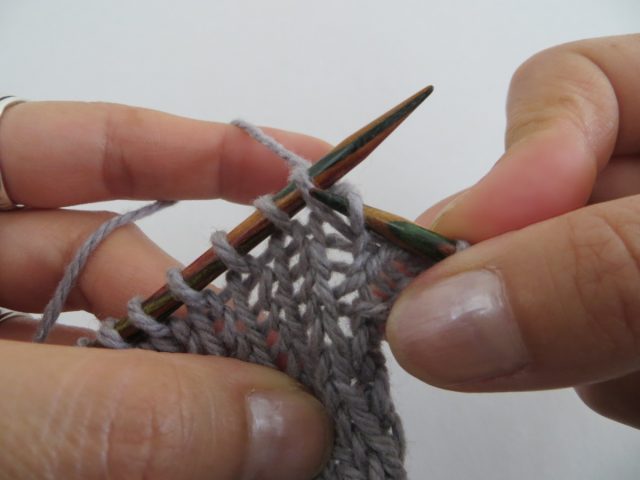
4. Here you’ve knit one stitch into the stitch below. One stitch increased!
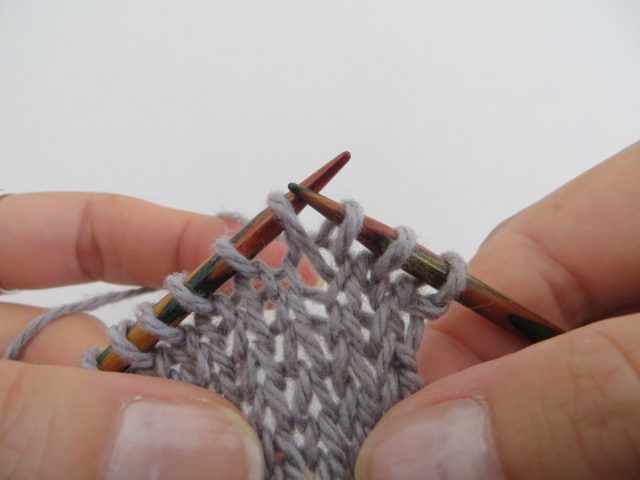
5. Now, you just have to knit the next stitch.
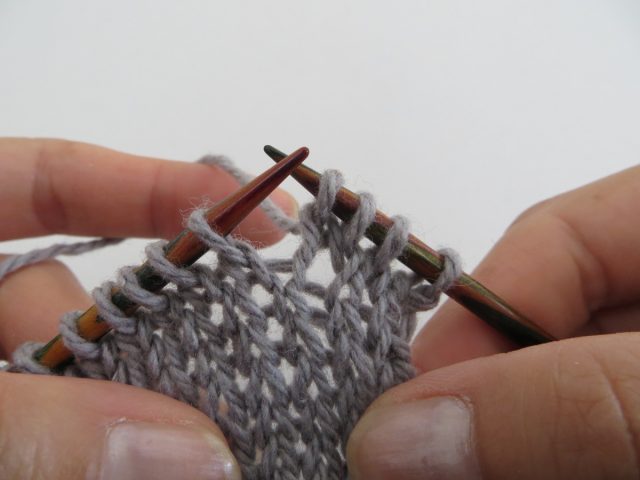
If this increase is called Knit Right Loop, it’s because you knit the right shoulder (or leg) of the stitch below.
Hope you’ve understood what I mean by “knit right or left loop of the stitches just below the stitches next to which you want to increase”, because KLL is a little more complicated. But don’t worry, you just have to knit into the right stitch!
Knit Left Loop = left-leaning increase
1. As at the right end of the work, I gonna increase next to the third to last stitch. Here I worked across the row leaving last 2 stitches.
As for KRL, you knit into the stitch below the one next to which you increase. But at the end of the row, the third stitch is already knit and is on your right hand needle.
So you have to knit into the stitch 2 rows below this third stitch on needle.
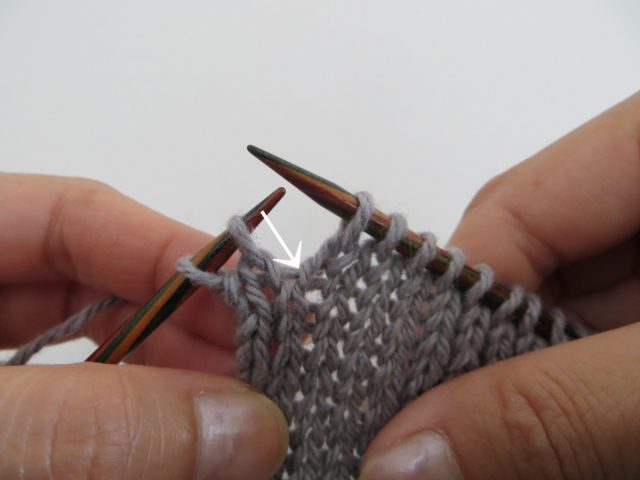
2. Insert your left needle from the left of the stitch 2 rows below, and lift this left loop onto it.

3. Then insert your right hand needle into the back of this loop, as if you “knit through back loop”.
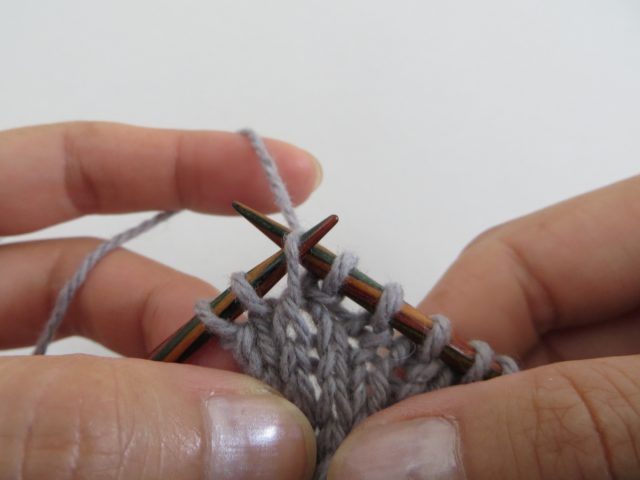
4. And just knit it. One stitch increased.
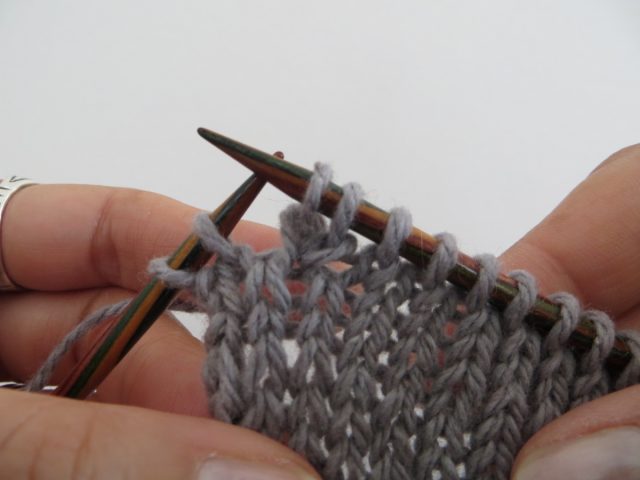
KRL and KLL are also called RLI and LLI, Right/Left-leaning Lifted Increase, because you lift the right or left loop of stitches, as we did for KLL. For KRL, you can lift the right loop onto your left needle before knitting it, but knitting directly into the stitch below as shown above is easier and quicker 🙂 The name changes depending on what you do but the result is the same.
These increases are qualified as “almost invisible” by TECHknitter. They are indeed neat, and unlike M1L/M1R, they don’t pucker your fabric – haven’t already gotten those smaller stitches on both sides of M1L and M1R?
Another curiosity of these increases is that they form symmetrical pairs with k2tog and ssk decreases.
These are the pictures of waist shaping on my Seacoast pullover, worked from the top down. The left photo is in the natural direction (even if it’s worked top-down!) and the right photo is upside down. And look how alike SSK on the right photo and KRLs on the left look!
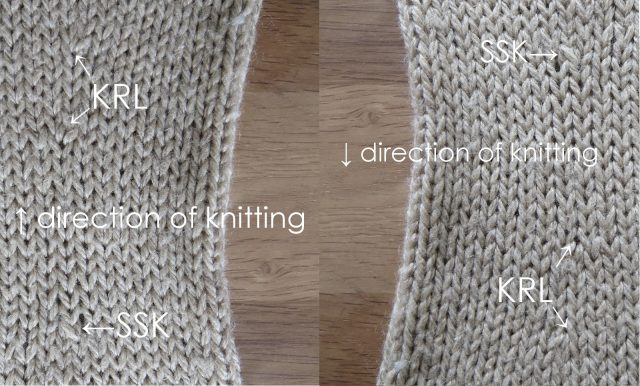
In the next post, I’ll show you their purled pairs, PRL and PLL!
Do you find this post helpful? Please consider supporting me if you want to read more helpful posts. Thank you 💜
![]()

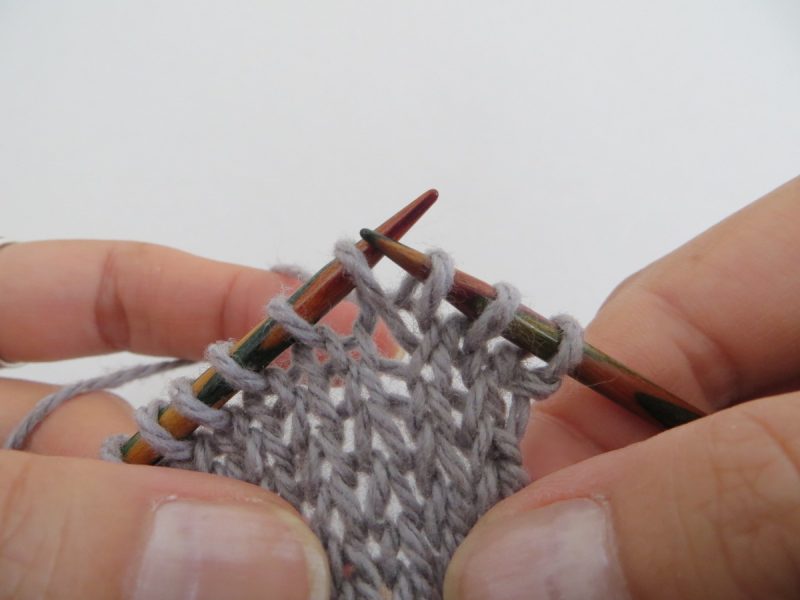
This is a very old post, but thank you for it none the less. Doing KRL the way most English patterns suggest left me with a saggy stitch. Doing it the way posted here gave me the clean increase I was looking for. Thank you so much.
Haha, it’s old but the technique hasn’t changed Happy to know that it still helps.